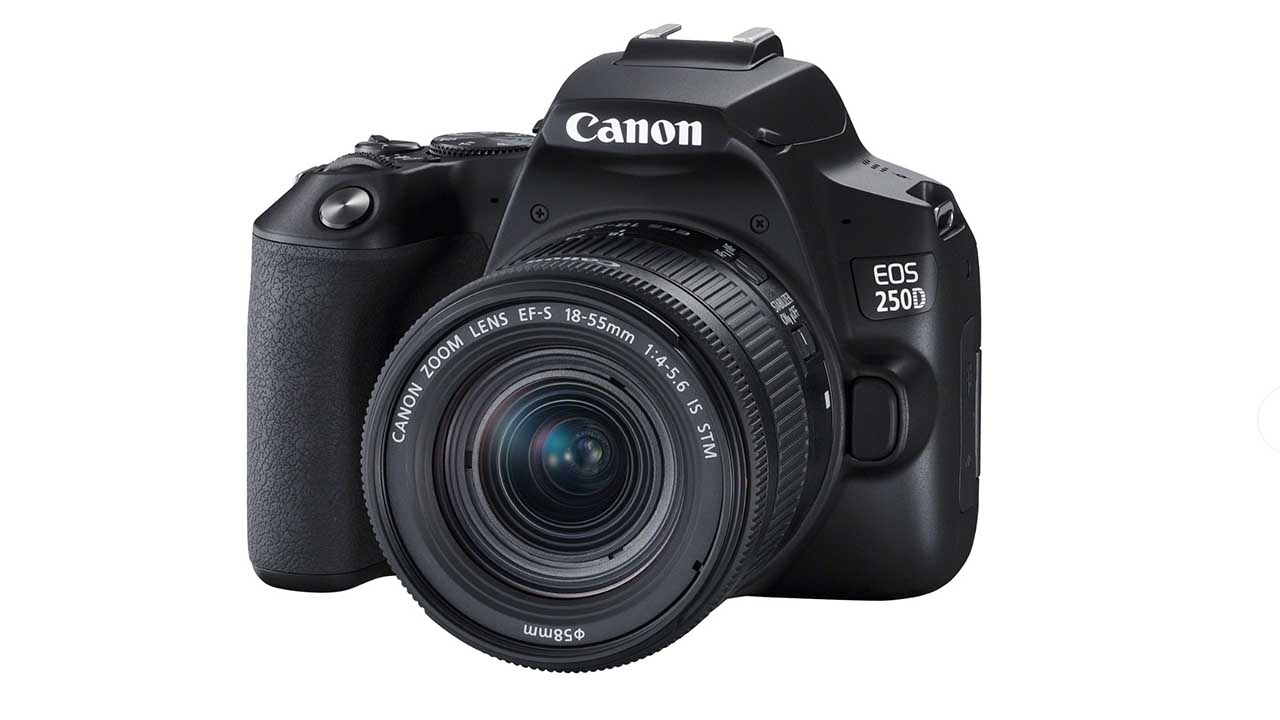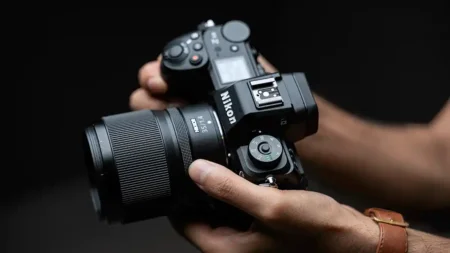While all the action recently has been happening with the newly developed R range, today Canon has announced the Canon EOS 250D.
Aimed at the budding photographer the EOS 250D is aimed at giving photographers the first big step-up from smartphone photography.
Canon has designed the camera to be the worlds smallest and lightest DSLR with a fully articulating screen.
The EOS 250D will be replacing the EOS 200D with upgraded specifications. However, many of the features that made the 200D so popular have been refined for this new model.
The guided user interface enables users to easily find the shooting options to capture the type and style of images that they want. This interface guides the user with hints and tips gathered from Canon experts.
Now the guided interface has taken a huge step forward and includes Canon’s Creative Assist. This feature includes a suite of effects, filters and colour adjustment tools that can be applied to an image before or after it is taken.
When I checked this feature out a few years back in its early conception there was plenty impressive knowledge locked inside.
Inside is a large 24.1MP dual pixel CMOS APS-C sensor and DIGIC 8 processor – this combination enables you to capture images with far more detail, tone and colour than you get from any smartphone.
Movie recording is ever growing and with the Canon EOS 250D, you can capture stunning 4K video. As Canon know how to do video the quality of the 4K should be outstanding and coupled with the articulating screen it will give users plenty of options.
Alongside the 4K video capture, the camera packs in 4K time-lapse and frame grab from 4K movies.
In a world where everything needs to be connected the EOS 250D will be launched alongside a fully featured App.
The big question that many might ask is why to upgrade to a compact DSLR over a Smartphone that has a higher resolution.
Resolution with images although important is only part of the story and the quality of the image is also dependent on the size and quality of the sensor.
The 24.1mp sensor may be smaller than the 40mp sensor of the Huawei P30 Pro but it’s larger sensor should be able to capture more tone and detail than it’s small rival if not at the same resolution.
Low light performance is always a big seller as it enables you to take pictures in light conditions where you would usually need a tripod or flash to capture a sharp image. Here the Canon EOS 250D has an ISO range of between 100-25600 and then this can be expanded to H:51200.
As well as decent low light performance when shooting stills Canon has looked at the performance when shooting video and when shooting at 1080p (Full HD) there’s a range of between 100-12800, again there is an expanded sensitivity of ISO 25600.
When shooting at 4K the max sensitivity is ISO 6400, which is very good for a camera of this price and size.
What does this look like in your image? Zoom in or print out the picture to 100% and look at the fine detail such as blocks of colour, brickwork or grass and you’ll see that the brick surface of the P30 Pro or iPhone image will lack a level of definition compared to dedicated DSLR.
Admittedly the gap is closing but for now, there is still a difference.
This greater image quality is made possible by the sensor and processor combination, but image quality isn’t the only thing. The 250D also offers Live View autofocus precision and Eye AF, Auto Lighting Optimizer, Digital Lens Optimizer and Highlight Tone Priority for sharp high-resolution images
Canon EOS 250D AF options
AF speeds on DSLRs are lighting fast and the same is true for the compact EOS 250D. Despite being an entry-level camera Canon has equipped the 250D with cutting edge AF technology.
An optical viewfinder (TTL) utilises a secondary image-forming phase-difference detection system with AF-dedicated sensor to ensures pin-sharp focus.
If you prefer to use the LiveView LCD on the back then the Dual Pixel CMOS AF System which uses phase detection pixels built onto imaging sensor will keep you on track.
The AF system through the viewfinder works on a series of points, with 9-point Center AF point which are ultra fast cross-type and supports up to f/5.6.
The centre AF point is vertical line-sensitive and supports f/2.8.
Other AF points are vertical line-sensitive or horizontal line-sensitive AF and will support up to f/5.6.
Using the LiveView on LCD screen you have a maximum of 143 AF points and this works throug the cameras automatic selection; 3 Freely position, 1 AF point/1 AF Zone max 3,975 points via manual selection which is impressive.
Many cameras can lose AF ability in low light conditions and here Canon has used their experience to ensure maximum AF ability in all conditions.
Using the optical viewfinder AF will work between EV -0.5 – 18 (centre AF point) 4 EV 0.5 – 18 (other AF points)
Switching to the LiveView and you get AF control from EV -4 – 18 (f/1.2 at 23 °C & ISO 100) with One-Shot AF.
Canon EOS 250D AF Modes
In different scenarios, you need different types of focus control and on the 250D Canon has supplied AI Focus, One Shot, AI Servo (AI Servo II algorithm).
Other features include: AF Point Selection via the optical viewfinder, selected AF point display which is indicated by a transmissive LCD in viewfinder and Quick Control screen, AF Lock which is locked when shutter button is pressed halfway in One-Shot AF mode or AF-ON Button is pressed, AF Assist Beam, emitted by optional dedicated Speedlite and finally Manual Focus which can be selected on some lens.
You can also share your images directly from the camera, through Wi-Fi and Bluetooth, although you do need a Smartphone to make the link. You can’t make calls on the 250D.
The biggest feature of the Canon EOS 250D is that it will be available in three colours; Black, White and Silver.
The Canon EOS 250D is available now for Pre-order and from retailers from the 25th of April.
Pricing and availability of the Canon EOS 250D
EOS 250D (body only): £529.99/ €599.99
EOS 250D + EF-S 18-55mm f/4-5.6 IS STM: £599.99/ €709.99
Canon EOS 250D – Key Features and specifications
- 24.1 Megapixel APS-C sensor and DIGIC 8 processor
- For superb image quality, even in low light
- Optical viewfinder
- See things as they really are – clear and simple
- 4K movies
- For incredible resolution
- Dual Pixel CMOS AF
- When using Live View mode, focusing is fast for photos and smooth for movies
- Vari-angle touchscreen
- Shoot from any angle and control the camera with familiar touchscreen gestures
- Guided user interface helps you learn
- Friendly, hands-on advice that helps you learn how to get the image you want
- Bluetooth and Wi-Fi
- A constant connection between camera and smart device for simple, automatic sharing
- Creative Assist
- Try new looks and enhance images
For more detail check out canon.co.uk



